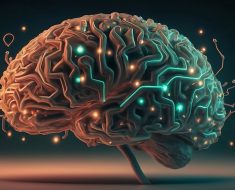Imagine a future where artificial intelligence isn’t just a tool for convenience but a cornerstone of our democratic process.
As we head towards the 2024 elections in the US and UK, this futuristic scenario is rapidly becoming our reality. AI is not just reshaping how campaigns are run but also how information is disseminated and consumed.
The stakes are incredibly high: AI holds the promise of unprecedented efficiency and engagement, but it also brings new challenges, including the spread of disinformation.
In this article, we’ll look at the transformative impact of AI on elections, exploring both its powerful potential and the urgent need for safeguards.
AI in the US Presidency Elections
Enhancing Campaign Strategies
Artificial intelligence has emerged as a game-changer in the US presidential elections, revolutionizing how people strategize and execute campaigns.
With AI, campaigns can analyze vast amounts of data from various sources, such as social media, voter registration databases, and past election results. This analysis enables campaigns to identify key voter segments, understand their preferences, and tailor messages to resonate with different groups.
For example, AI algorithms can determine which issues are most important to specific demographics, allowing campaigns to focus their efforts on the topics that matter most to voters.
Targeted Advertising
One of the most significant advantages of AI in political campaigns is its ability to create highly targeted advertisements.
By leveraging machine learning and predictive analytics, campaigns can identify potential swing voters and craft personalized ads that address their specific concerns and interests.
These targeted ads can be delivered through various channels, including social media platforms, email, and even text messages. This precision targeting not only increases the effectiveness of campaign messaging but also optimizes the allocation of campaign resources.
Real-Time Sentiment Analysis
AI also plays a crucial role in real-time sentiment analysis, helping campaigns gauge public opinion and adjust their strategies accordingly.
By monitoring social media platforms, news websites, and online forums, AI tools can analyze the sentiment of posts and comments to determine how voters feel about candidates, policies, and current events.
This real-time feedback allows campaigns to be agile, making quick adjustments to their messaging and tactics in response to shifting public opinion.
Predictive Modeling
Predictive modeling is another powerful application of AI in the US presidency elections. By analyzing historical voting patterns, demographic data, and current polling information, AI models can forecast election outcomes with remarkable accuracy.
These predictions help campaigns identify key battleground states and regions where they need to concentrate their efforts. Predictive modeling also aids in resource allocation. This ensures we invest time, money, and manpower where they will have the most significant impact.
Enhancing Voter Turnout
AI technology can also enhance voter turnout by making it easier for people to participate in the electoral process. For instance, AI-powered chatbots can provide voters with information about polling locations, registration deadlines, and absentee ballot procedures.
These chatbots can answer questions in real-time, helping to reduce confusion and encourage more people to vote.
Additionally, AI-driven tools can identify and target likely non-voters with personalized messages. These messages address their specific barriers to voting, such as lack of information or motivation.
Mitigating Misinformation
While AI can be used to spread disinformation, it is also a critical tool in combating it. AI algorithms can identify and flag fake news, deepfakes, and misleading content circulating on social media and other online platforms.
By collaborating with tech companies and fact-checking organizations, campaigns can use AI to monitor and counteract false information quickly. This proactive approach helps maintain the integrity of the electoral process and ensures that voters make informed decisions based on accurate information.
AI in the UK 2024 Election
Transforming Campaign Strategies
AI is set to play a pivotal role in shaping campaign strategies, as the UK approaches the 2024 general election.
Just like in the US, political parties in the UK are harnessing the power of AI to analyze voter data and identify key issues that resonate with different demographics. AI-driven tools are helping parties to understand voter behavior, preferences, and concerns, enabling them to tailor their messages more effectively.
By leveraging AI, parties can craft personalized campaigns that speak directly to the needs and aspirations of their target audiences.
Precision Targeting and Microtargeting
One of the most significant advantages of AI in the UK elections is its ability to facilitate precision targeting and microtargeting. By analyzing data from social media, surveys, and voter databases, AI algorithms can segment the electorate into distinct groups based on various factors such as age, gender, location, and political affiliation.
This allows parties to deliver highly personalized messages that are more likely to resonate with each group. For instance, younger voters might receive messages focused on climate change and education. On the other hand, older voters might see content related to healthcare and pensions.
Enhancing Voter Engagement
AI technology is also being used to enhance voter engagement in the UK 2024 election. AI-powered chatbots and virtual assistants can interact with voters, answering their questions about party policies, voting procedures, and election dates.
These tools can provide instant, accurate information, making it easier for voters to participate in the electoral process. Additionally, AI can help parties to identify and engage with undecided voters, providing them with the information they need to make informed decisions.
Predictive Analytics and Polling
Predictive analytics is another area where AI is making a significant impact in the UK election. By analyzing historical voting data, current polling information, and demographic trends, AI models can predict election outcomes with a high degree of accuracy.
These predictions help parties to focus their efforts on swing constituencies and key battlegrounds. Moreover, AI-driven polling techniques can provide real-time insights into voter sentiment, allowing parties to adjust their strategies and messaging on the fly.
Combating Disinformation
The rise of AI has brought with it the challenge of disinformation, and the UK 2024 election is no exception. AI can be used both to create and to combat fake news and deepfakes. Political parties and independent organizations are leveraging AI to detect and flag false information circulating on social media and other platforms.
By identifying misleading content quickly, AI tools help to maintain the integrity of the electoral process and ensure that voters are making decisions based on accurate information.
Enhancing Debate and Discourse
AI is also playing a role in enhancing political debate and discourse in the UK. AI-powered analysis tools can evaluate the performance of candidates in debates, providing real-time feedback on their speaking patterns, emotional tone, and audience reactions.
This information can be used to refine debate strategies and improve communication with voters. Additionally, AI can analyze public responses to debates and speeches, helping parties understand which issues resonate most with the electorate.
AI Disinformation
The Rise of AI-Generated Disinformation
As artificial intelligence technology advances, so does its capacity to create and spread disinformation.
AI-generated disinformation, often referred to as “deepfakes” or synthetic media, involves the use of sophisticated algorithms to produce highly realistic images, videos, and audio recordings that can deceive viewers.
These AI tools can fabricate convincing news reports, speeches, and even conversations that never occurred, making it increasingly challenging for the public to distinguish between authentic and manipulated content.
How AI Creates Disinformation
AI disinformation typically involves two key technologies: natural language processing (NLP) and generative adversarial networks (GANs).
NLP enables AI systems to generate realistic text, such as fake news articles or social media posts, that mimic the style and tone of human writing. GANs, on the other hand, are used to create synthetic images, videos, and audio.
GANs work by pitting two neural networks against each other: one generates fake content while the other attempts to detect it. Through this process, the system becomes adept at creating highly realistic forgeries.
Examples of AI Disinformation
One prominent example of AI disinformation is the creation of deepfake videos. In this case, the face and voice of a person are convincingly superimposed onto another person’s body.
This technology has been used to create fake videos of politicians making statements they never actually made. This potentially influences public opinion and sows discord.
Similarly, AI-generated fake news articles spread false information rapidly, especially through social media platforms where content can go viral in a matter of minutes.
Impact on Elections
The potential impact of AI disinformation on elections is profound. Misinformation can alter the outcome of an election by misleading voters, manipulating public opinion, and eroding trust in democratic institutions.
During election cycles, fake news stories and deepfake videos can be strategically released to discredit candidates, spread false narratives, or incite social unrest. The rapid spread of such disinformation can create confusion and undermine the integrity of the electoral process.
Combatting AI Disinformation
We can use various strategies to combat AI disinformation. These include:
- AI Detection Tools: AI can be used to detect deepfakes and other forms of synthetic media. Advanced algorithms can analyze content for inconsistencies that are often imperceptible to the human eye, such as unnatural facial movements or audio-visual discrepancies.
- Fact-Checking Services: Fact-checking organizations are leveraging AI to quickly identify and debunk false information. AI-driven tools can scan vast amounts of online content to flag potential disinformation for human review.
- Public Awareness Campaigns: Educating the public about the existence and risks of AI disinformation is crucial. Awareness campaigns can help people recognize signs of fake content and encourage critical thinking when consuming information online.
- Regulatory Measures: Governments and regulatory bodies are considering new laws and regulations to address the spread of AI-generated disinformation. These measures might include transparency requirements for political advertising, stricter penalties for spreading fake news, and collaboration with tech companies to monitor and control the dissemination of disinformation.
- Collaboration with Tech Companies: Social media platforms and tech companies play a critical role in combatting AI disinformation. By implementing stricter content moderation policies, investing in AI detection technologies, and promoting digital literacy, these companies can help mitigate the spread of false information.
Protect Elections from Deceptive AI Act
Introduction to the Act
The Protect Elections from Deceptive AI Act is a legislative measure designed to address the growing concern of AI-generated disinformation and its potential impact on democratic processes.
This act aims to safeguard the integrity of elections by implementing stringent regulations on the use and dissemination of artificial intelligence technologies that can create misleading or harmful content.
As AI tools become more sophisticated, the risk of these technologies being used to manipulate public opinion and interfere with elections has increased, prompting the need for such a legislative response.
Key Provisions of the Act
The Protect Elections from Deceptive AI Act includes several key provisions designed to curb the spread of deceptive AI-generated content and ensure transparency and accountability. These provisions include:
- Transparency Requirements: The act mandates that any AI-generated content, particularly those related to political campaigns and elections, must be clearly labeled as such. This transparency requirement aims to inform the public that the content they are viewing is generated by AI, thereby reducing the likelihood of it being mistaken for genuine human-generated content.
- Disclosure of AI Use in Political Campaigns: Political parties, candidates, and related organizations are required to disclose their use of AI technologies in campaign activities. This includes the use of AI for creating advertisements, generating social media posts, or any other campaign-related content. The goal is to provide voters with clear information about the methods used to influence their decisions.
- Stricter Penalties for Disinformation: The act imposes stricter penalties on individuals and organizations found guilty of creating or disseminating AI-generated disinformation. These penalties serve as a deterrent against the misuse of AI technologies for spreading false information that could disrupt the electoral process.
- Collaboration with Tech Companies: The act encourages collaboration between government agencies and technology companies to develop and implement AI detection tools. By working together, these entities can more effectively identify and remove deceptive AI-generated content from online platforms, ensuring a cleaner information ecosystem during election periods.
- Funding for Research and Development: The act allocates funding for research and development of advanced AI detection and verification technologies. Investing in R&D will help develop more sophisticated tools capable of identifying deepfakes and other forms of AI-generated disinformation with greater accuracy.
Importance of the Act
The Protect Elections from Deceptive AI Act is crucial in addressing the unique challenges posed by AI technologies in the context of elections. As AI continues to evolve, so does its potential for misuse.
The act aims to mitigate these risks by establishing a legal framework that promotes transparency, accountability, and collaboration. By doing so, it helps to preserve the integrity of democratic processes and ensure fair and honest conduct of elections.
Challenges and Considerations
While the Protect Elections from Deceptive AI Act is a significant step forward, it also faces several challenges and considerations:
- Technological Arms Race: As AI detection technologies improve, so too will the methods used to create deceptive AI content. This ongoing technological arms race requires continuous investment in research and development to stay ahead of malicious actors.
- Balancing Regulation and Innovation: The act must strike a balance between regulating the use of AI technologies and not stifling innovation. Overly restrictive regulations could hinder the development of beneficial AI applications, while too lenient regulations might not provide adequate protection against disinformation.
- International Collaboration: Disinformation campaigns are often transnational, requiring international collaboration to effectively combat them. The act must promote cooperation with other countries to address the global nature of AI-generated disinformation.
- Public Awareness and Education: Ensuring that the public understands the nature of AI-generated disinformation and how to recognize it is essential. Public awareness campaigns and educational initiatives can complement legislative efforts by equipping voters with the knowledge needed to critically evaluate the information they encounter.
Application of AI in Politics
Artificial Intelligence (AI) is transforming the political landscape, offering powerful tools for campaigns, governance, and public engagement.
1. Campaign Strategies and Voter Targeting
AI helps political campaigns develop more effective strategies by analyzing vast amounts of data to understand voter behavior and preferences. This includes:
- Predictive Analytics: AI algorithms can predict election outcomes and voter turnout based on historical data, current trends, and social media sentiment.
- Microtargeting: AI enables campaigns to target specific voter groups with personalized messages. AI can identify and reach voters and influence them. How? By analyzing demographic data, social media activity, and online behavior.
- Ad Placement: AI can optimize where and when to place ads for maximum impact, ensuring that campaign messages reach the right audience at the right time.
2. Social Media Management
Social media is a crucial battleground in modern politics, and AI plays a significant role in managing online presence:
- Sentiment Analysis: AI tools analyze social media posts, comments, and tweets to gauge public sentiment toward candidates and issues. This helps campaigns adjust their messaging in real time.
- Automated Content Creation: AI can generate social media posts, responses, and even articles. This helps maintain a constant online presence and engage with voters efficiently.
- Bot Detection: AI can identify and counteract malicious bots spreading disinformation, ensuring a more authentic online discourse.
3. Debates and Public Speaking
AI technologies are also enhancing the preparation and delivery of political debates and speeches:
- Speech Writing: AI tools assist in crafting speeches by suggesting impactful phrases, structuring content, and even predicting audience reactions.
- Real-time Feedback: During live debates, AI can provide instant feedback on the effectiveness of arguments, helping speakers adjust their strategies on the fly.
- Virtual Debates: AI-powered avatars can participate in virtual debates, simulating real interactions and helping candidates practice.
4. Governance and Policy Making
People are really using AI in governance to streamline operations and enhance decision-making:
- Data Analysis: Governments use AI to analyze large datasets for policy-making, such as economic data, healthcare statistics, and crime reports. This leads to more informed and effective policies.
- Predictive Policing: AI helps law enforcement predict and prevent crimes by analyzing patterns and trends, although this application raises significant ethical and privacy concerns.
- Resource Allocation: AI optimizes the allocation of resources in areas like healthcare, education, and infrastructure, ensuring more efficient use of public funds.
5. Voter Engagement and Education
AI-powered tools are helping voters stay informed and engaged with the political process:
- Chatbots: Political campaigns and government agencies use AI chatbots to answer voter questions, provide information about voting processes, and gather feedback.
- Interactive Platforms: AI-driven platforms engage voters through interactive content, quizzes, and personalized information about candidates and issues.
- Educational Tools: AI applications educate voters about political processes, historical data, and current events, promoting a more informed electorate.
6. Combating Misinformation
AI plays a critical role in identifying and combating misinformation and fake news:
- Fact-Checking: AI algorithms can quickly verify facts and debunk false information, helping to maintain the integrity of information circulating online.
- Deepfake Detection: Advanced AI tools detect deep fake videos and images
- Content Moderation: Social media platforms employ AI to moderate content, remove fake accounts, and reduce the spread of misleading information.
7. Enhancing Transparency and Accountability
We can also leverage AI technologies to promote transparency and accountability in politics:
- Open Data Initiatives: Governments are using AI to manage and analyze open data, making information about public spending, government activities, and policy outcomes accessible to citizens.
- Monitoring Corruption: AI systems can detect irregularities and potential corruption in government transactions, procurement processes, and financial records.
- Public Engagement Platforms: AI-driven platforms allow citizens to participate in decision-making processes, provide feedback on policies, and hold politicians accountable.
AI Impact on Elections
Positive Impacts
- Enhanced Voter Insights: AI provides deep insights into voter behavior, helping campaigns tailor their messages effectively.
- Improved Accessibility: AI tools, such as language translation and voice recognition, make election information accessible to a broader audience.
- Efficient Resource Allocation: AI optimizes campaign resource allocation, ensuring a focus on critical areas.
Negative Impacts
- Privacy Concerns: Extensive data collection for AI analysis raises significant privacy concerns among voters.
- Manipulation Risks: Yes, people can exploit AI’s ability to influence public opinion for manipulative purposes, undermining the democratic process.
- Trust Erosion: The proliferation of AI-generated fake content can erode trust in political institutions and election results.
The Bottom Line
AI is turning the world of elections on its head, supercharging campaign strategies, boosting voter engagement, and making resource allocation a breeze. But let’s not kid ourselves—the dangers of AI-driven disinformation and privacy breaches are very real.
We need strong laws, smart regulations, and cutting-edge detection tools to protect our elections. As AI keeps advancing, it’s going to reshape our democracy in ways we can’t yet imagine.
The challenge? Finding that sweet spot where we can reap the benefits of AI while keeping its risks in check.
FAQs
1. What does AI mean in politics?
AI in politics refers to the use of artificial intelligence technologies to analyze voter data, predict election outcomes, manage campaigns, and combat misinformation. It helps political parties and candidates optimize their strategies and engage with voters more effectively.
2. How is artificial intelligence used in political advertising?
AI is used in political advertising to target specific demographics with personalized messages. It analyzes data from social media, online behavior, and voter databases to create targeted ads, optimize ad placements, and measure campaign effectiveness in real time.
3. How is AI used in diplomacy?
AI is used in diplomacy to analyze vast amounts of data for better decision-making, predict geopolitical trends, and manage diplomatic communications. It helps diplomats understand international sentiments, monitor compliance with agreements, and automate routine tasks.
4. What is artificial intelligence in political science?
Artificial intelligence in political science involves using AI tools and techniques to study political behavior, predict election outcomes, analyze policy impacts, and understand voter sentiments. It enhances research by providing more accurate data analysis and modeling complex political scenarios.





